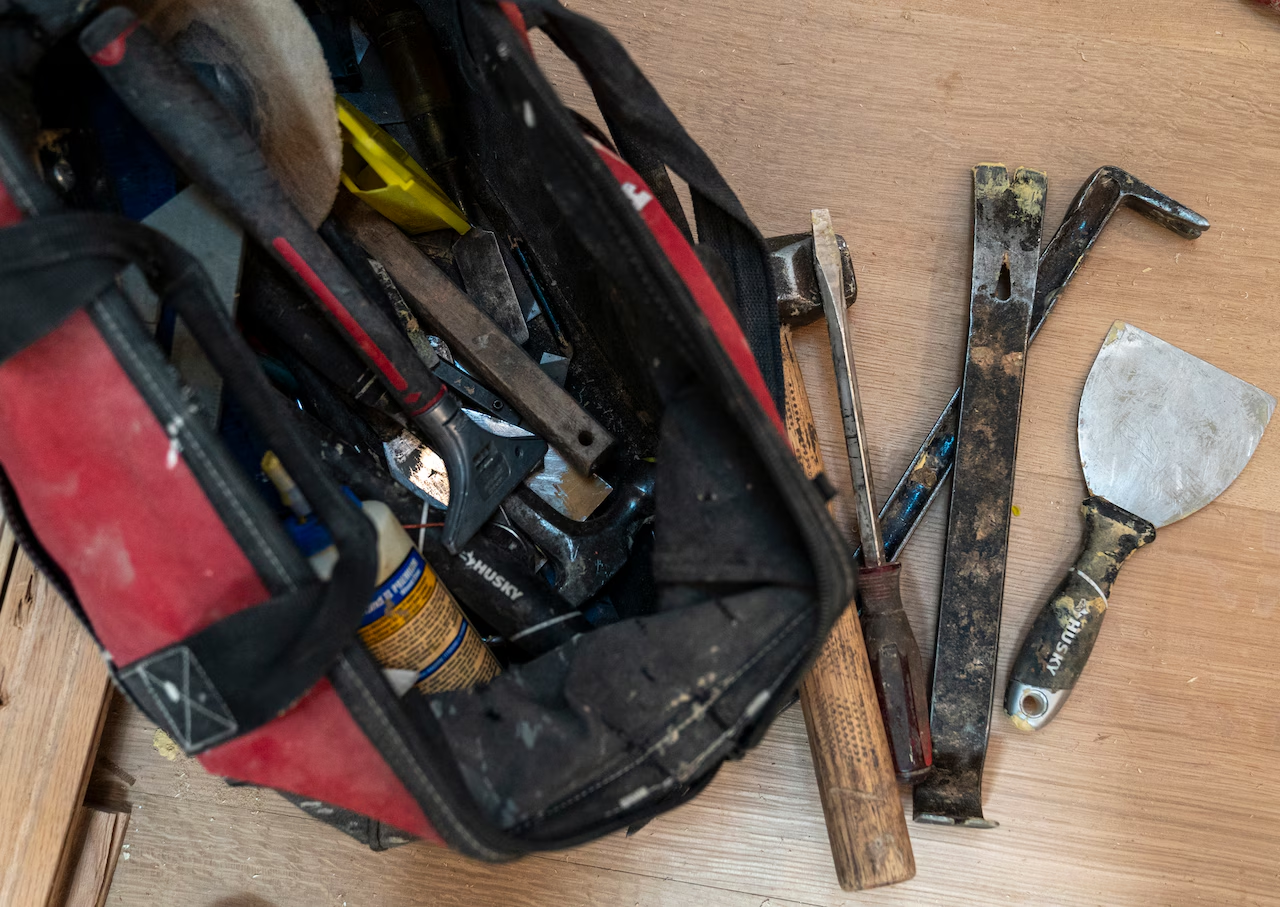Border Patrol Commander Gregory Bovino testifies in Chicago court: Live Updates

2m ago
Hearing concludes and court is adjourned.
Before adjourning, Judge Ellis asks the parties if there’s anything else they’d like to discuss.
The plaintiffs say no. Lawyers for the government reiterate they reject everything the judge has ordered and said. Ellis laughs and says she knew that.
A lawyer for the government expresses concern that body cameras can be distributed by Friday.
“You’ll find out, and you’ll tell me,” Judge Ellis responds. “I’m a reasonable person.”
Ellis asks for no redactions as everything is filed under seal and when no one else has anything, she adjourns court for the day shortly before noon.
4m ago
Plaintiffs request TRO be modified to prevent use of tear gas
Plaintiffs filed a motion to modify the TRO to prevent federal agents from using tear gas.
The government argues it’s a necessary tool they sometimes need.
The plaintiffs cite 13 uses of tear gas in the Northern District of Illinois since Operation Midway Blitz began, with seven coming after the TRO was issued.
“What is happening is agents are proactively throwing tear gas at civilian,” the plaintiffs argue. “[They’re] using violence to justify more force.”
For the moment, Judge Ellis declines to modify the TRO — citing in part this hearing and her new daily meetings with Bovino — but says she “expect[s] that everybody acts in good faith.”
“I have no desire to run CBP,” she says. “I also don’t want folks to walk themselves into a consent decree.”
She said after this morning, she hopes for the best. She says she won’t tie agents’ hands but also isn’t “afraid to enforce this TRO.”
8m ago
Hearing over use of force violations continues
Commander Bovino’s testimony may be over, but the hearing is not. Now the plaintiffs and lawyers for the government argue over upcoming depositions, the state of the current TRO and protections for protesters, journalists and clergy under the First Amendment.
Plaintiffs asked the judge for a written order on what she just instructed and Judge Ellis agrees.
She also rejects a request to stay Bovino’s deposition, and also says she believes the instructions she just gave out for Bovino are reasonable.
“These reports exist, right?” she says. “And I’m not asking that you go back a long time; it’s Sept. 2nd. And going through Saturday. That shouldn’t be many reports.”
That remark draws a chuckle in the courtroom.
She asks both parties if they want to move the hearing date for the preliminary injunction, currently set for Nov. 5, to another day, and says the TRO remains in effect until then.
Plaintiffs ask to move the date, but lawyers for the government want it to stay the same, which draws more laughs from the courtroom.
Judge Ellis keeps the hearing date Nov. 5.
16m ago
Bovino dismissed, leaves with Border Patrol agents
After handing down her instruction, Judge Ellis asks Bovino if he has any questions for her, to which he responds, “I don’t have any questions, your honor.”
He is dismissed and leaves court with Border Patrol agents.
17m ago
Arrest documentation due by end of week
Judge Ellis has ordered Bovino to provide her with a chart of everyone that’s been arrested during Operation Midway Blitz who has not been arrested for anything immigration-related by Friday.
To clarify, she says she’s “not interested in Home Depot arrests,” but instead arrests of members of the public that are watching their actions and others who have been arrested by agents.
She requires Bovino to provide names, dates of arrest, charges and resolutions. Names will be kept under seal.
Arrests from Sept. 2 through today are due by Friday. The document can then be updated moving forward, Ellis says.
19m ago
Judge Ellis requires daily meetings with Bovino
Judge Ellis is now requiring Bovino to meet with her daily at 4:30 p.m. until a Nov. 5 preliminary injunction hearing to find out how the day went.
The meetings must be in person. Bovino says 6 p.m. would be better and she agrees. Meetings begin Wednesday, and they do not need to meet on weekends.
The requirement draws laughs from people in court.
21m ago
Ellis issues reporting requirements for Bovino, CBP
Ellis now begins to lay out new requirements for Bovino to “make sure that we’re on the same page.”
First, she says, every time force is used a report must be filed, in accordance with CBP’s own rules and regulations. Those reports need to be done within one hour to a supervisor, documented within 24 hours and finalized within 72 hours.
All use of force reports from Sept. 2 through Saturday can be under seal, Ellis says, and need to be delivered to her by close of business today.
She also wants body-worn camera compliance by close of business today.
Bovino asks for more time because that it takes a lot of hours, so Ellis agrees to give him until Friday for both the reports and cameras.
“Any reports going forward, I would ;ole those finalized reports within 24 hours after they’ve been finalized,” Ellis says. “So 72 hours plus 24.”
24m ago
More violations noted in Lakeview
Ellis quickly goes through violations in clashes with CBP in Lakeview Friday. Again, she says, tear gas was deployed and officers did not have visible identification.
Bovino doesn’t respond but maintains eye contact with the judge.
“I think we’re on the same page, right?” Judge Ellis says in conclusion.
“I understand what you’re saying, your honor,” Bovino replies.
26m ago
“I can only imagine how terrified they were”
Judge Ellis now speaks about the presence of children when tear gas was deployed. Families were gathered in the area for a Halloween celebration.
“Those kids were tear gassed on their way to celebrate Halloween in their local school parking lot,” Ellis says. “I can only imagine how terrified they were.”
She says Bovino may not be familiar with Chicago’s neighborhoods, which he agrees with.
“These kids, their sense of safety was shattered on Saturday,” she says. “And it’s going to take a long time for that to come back.”
Bovino does not respond, but continues to look at her as she speaks about how Saturday should have been a happy day for these children in Old Irving Park.
“One of the reasons why I have you in today is to ensure you go about enforcing the law, that it’s done in a manner that is objectively reasonable and consistent with your obligations and the agents under you,” she says, invoking the First and Fourth Amendments. “So that kids in Little Village can feel safe walking to the store or walking to school and not worry about getting tear gassed. That’s not how any of us want to live.”
30m ago
Judge turns attention to Old Irving Park
Judge Ellis then goes through the violations lodged after the clash in Old Irving Park, in which tear gas and riot control techniques were deployed on a residential street.
“Your honor, those techniques and tactics can be employed, it’s dependent on the situation and what level of force is present there,” Bovino testifies.
“Generally, some guy standing on the side of the street in front of his house or next to his car, most of the time —absent something unusual — is not presenting such a risk that deadly force is appropriate,” Ellis counters.
“Yes ma’am, your honor, that would be situational,” Bovino responds, and says he’d have to take into account the situation before he could “make a definitive assessment.”
Ellis mentions that someone could be marathon training, and that someone that day was reported to be running or training and were detained by CBP agents.
“Given the scenario that you’ve explained there, I would see no reason to do that,” Bovino responds.
34m ago
Bovino hedges on Little Village clash
Judge Ellis addresses two violations filed in the clash with protesters in Little Village last week.
First was that one of the officers did not have identifying information on them that was visible.
“So when we say conspicuous you know it really needs to be conspicuous,” Ellis said.
The second is the two tear gas canisters “that you deployed.”
“At least in the declarations and the video…there was no warning prior to deploying,” she says.
She also says a man was struck in the neck by a pepper ball at that protest and is now “fearful” to show up at future protests.
When asked about those incidents, Bovino said it’s “dependent on the situation” and said “I don’t know what other factors were present there.”
When asked if no one wants to violate the TRO, he responds, “That is correct. Yes ma’am.”
41m ago
Judge begins questioning about violations
After going through the temporary restraining order, Judge Ellis turns her attention to the alleged violations of it filed by plaintiffs. These include violations related to the clash in Little Village and a clash over the weekend in Old Irving Park in a residential area, while kids were on their way to a Halloween parade.
The judge also will review violations alleged in clashes in Lakeview last week.
43m ago
Judge wraps up tour through TRO
Judge Ellis reaches the end of her paragraph-by-paragraph reading of her court order.
“Do you have any questions for me after going through this TRO?” she asks Bovino.
“No, your honor,” he responds.
45m ago
Bovino to get body camera by Friday
Judge Ellis asks Bovino if he’s in contact with DHS Secretary Kristi Noem.
“I talk to her from time to time, yeah,” he replies.
“I suspect that if you ask for [a body-worn camera], you could probably get one,” Judge Ellis ventures.
“Yes ma’am,” Bovino replies.
“So how ’bout by Friday we get a camera for yourself?”
“We can,” Bovino agrees.
“And the training,” Judge Ellis specifies and Bovino agrees again.
“If someone’s throwing a rock at your head, the camera’s gonna catch it,” Ellis tells him. “And that’s not a matter of it, this is what you said happened. It is on video.”
49m ago
Bovino testifies he does not have a body camera
When Judge Ellis asked Bovino if he himself has a body-worn camera, he admitted he doesn’t.
“No, I do not,” he testified. He said he has not received a camera or the training on it.
49m ago
Testimony turns to body-worn cameras
Ellis’ next line of questioning is about the body cameras she ordered all federal agents wear. She asks again if they all wear the cameras, which is what lawyers for CBP testified to last week.
“The vast majority do,” Bovino responds, but says not everyone has them yet.
Bovino testifies agents spend approximately four hours on body camera training. Ellis counters that the “training is not the problem, the dispersal of the equipment is.”
Bovino says he’ll try to get them all, drawing a slight chuckle in the courtroom.
Bovino also affirms there are “approximately” 201 CBP agents in the Chicago area, and says he doesn’t know how many of them have body-worn cameras. Ellis asks him to try to get everyone involved in Operation Midway Blitz into body-worn cameras, and he agrees to try.
“The cameras are your friends,” Ellis tells him. “If you’re conducting enforcement and there is a threat, the body-worn camera can pick that up.”
“I would very much appreciate that you do whatever you can,” she adds.
52m ago
Ellis asks first question: How are agents identifying themselves?
Judge Ellis’s first question to Bovino: Where are his agents supposed to put their identifying badges and numbers?
Bovino responds he instructed his agents to put it “conspicuously…somewhere on their uniform.”
Ellis says they should pick a single place for consistency.
Bovino suggests picking “a few places” as they have different equipment they wear and so one spot, like the right shoulder, could get covered up depending on what they’re bringing.
Ellis asks if they could choose two places, and whether agents always wear helmets n the field. “That depends,” Bovino replies.
“Why don’t we say, then, that the identifier needs to be in a conspicuous location in at least two places. Is that fair?” Ellis offers.
“That creates…confusion amongst the agents,” Bovino says of placing identifiers in various locations.
“I’m not trying to micromanage, I’m trying to make this as easy as possible,” Ellis replies. “OK?”
“Yes ma’am,” Bovino responds.
10:49 AM
Bovino’s X account reposts DHS video while he’s on the bench
As Bovino was on the bench, listening to Judge Ellis, someone from his X account reposted a video from the U.S. Department of Homeland Security.
The highly produced and edited video shows several different angles, including from body-worn cameras, of the Little Village clash in which Bovino was caught on camera throwing tear gas canisters into a crowd of protesters. That incident largely precluded Bovino’s testimony in open court today.
10:45 AM
Videos filed by plaintiffs seen by judge
Judge Ellis said while she’s not there on the streets of Chicago, “I’m getting videos that the plaintiffs file. That citizens sent int and at least on videos that I see…knowing I’m not there, it is difficult for me to see that the force being used is necessary to stop an immediate and serious threat of harm to another person.”
She noted a photo of a man who had been shot in the neck by a pepper ball that plaintiffs filed, saying he was not posing an immediate threat to agents. She also noted a video of a woman in Little Village with a knee in her back.
“The video of that did not appear to show, and again there may be other videos that I have not seen. But it did not appear to show that she was posing an immediate threat of physical harm to anyone,” Ellis said.
Ellis said that’s been consistent through all the plaintiffs filings, “that there was no warning given…that no one was told that any agent might employ riot control weapons. And there was no no time to allow people to comply before the weapons were deployed.”
“They must tell people what they are going to do before they do it so people have the opportunity to comply,” Ellis said. “And that’s what I meant. That isn’t what I see in any of these videos.”
10:39 AM
Paragraph-by-paragraph through the TRO
Bovino is watching Judge Ellis as she speaks. His body is angled towards her as he’s seated on the stand. Judge Ellis literally has the TRO printed and in her hands as she goes through it. She’s reading it verbatim and then explaining it.
“You’ve gotta leave journalists alone,” she says.
She explains that people on sidewalks and in the street, if they are in a public place, are allowed to be there unless there are exigent circumstances.
“Not standing there,” she clarifies. “Not shouting. None of that is something that’s going to cause substantial harm.”
She goes over the restrictions on using riot control weapons, including not being allowed to use them against the press, protesters and religious leaders without due cause.
“Kids dressed in Halloween costumes walking to a parade don’t post an immediate threat to the safety of a law enforcement officer,” Ellis said. “They just don’t. And you can’t use riot control weapons against them.”
10:35 AM
Judge questions why agents are disregarding orders
Judge Ellis questioned why federal agents appear to be disregarding the guidelines in the temporary restraining orders she’s issued, saying she sees it likely as one of three options: first, that the TRO isn’t clear, second that nobody ever read the TRO, or that “folks read it, understood it and just actively decided not to abide by it.”
She dismissed the second option, that they never read it, saying “I don’t think [that] happened,” and said the third option of it being intentional disregarded didn’t feel possible, “So it must be that it’s just option one.”
And then Judge Ellis launched into a paragraph-by-paragraph reading of the order.
10:28 AM
Bovino takes the stand
Judge Sara Eliis took the called Gregory Bovino to take the stand at 10:04 a.m. to a packed courtroom.
She began the hearing by reflecting on the oath she took as a judge and that Bovino took as the head of Customs and Border Protection.
“When I was getting ready for this morning I took a look at the oath that I took. And the oath that you took when we both started our jobs,” she said. “And in thinking about it, even though the words of the oath that we took are different, fundamentally it’s the same goal. We both agree to support and defend and uphold the Constitution.”
She noted that in their different branches — judicial and executive, respectively — they play different roles, but have similar goals.
“My goal is not to tell you that you can or cannot enforce validly passed laws by Congress. That’s not my role and I have no intention of doing that. My role is simply to see that in the enforcement of those laws, that you and the agents under you are acting in a manner consistent with your obligations under the law,” Ellis said.





